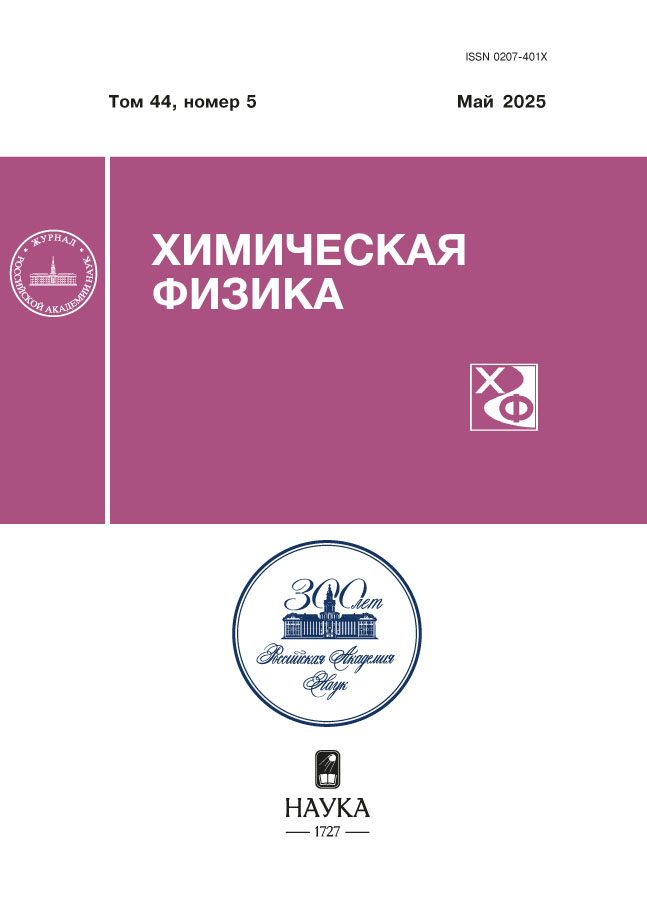Nanoporosity of polymer membranes and corresponding powder materials on the bases of gas sorption results and positron annihilation experiments
- Authors: Shantarovich V.P.1, Bekeshev V.G.1, Kevdina I.B.1, Alentiev A.Y.2
-
Affiliations:
- Smenov Federal Research Center for Chemical Physics, Russian Academy of Sciences
- Topchiev Institute of Petrochemical Synthesis, Russian Academy of Sciences
- Issue: Vol 44, No 5 (2025)
- Pages: 88-94
- Section: Chemical physics of nanomaterials
- URL: https://transsyst.ru/0207-401X/article/view/683917
- DOI: https://doi.org/10.31857/S0207401X25050105
- ID: 683917
Cite item
Abstract
Variations of nanoporosity obtained on casting of membranes from the original highly dispersed polyphenylene oxides (PPO) of various crystallinity (from 0 to 69.2%) on the bases of the data, obtained by the methods of positron annihilation and low temperature gas (N2, CO₂) sorption, are discussed. The notion of nanoporosity includes microporosity and mesoporosity of the materials with pore sizes from some Å up to several tens of nanometers. A combination of the results of positron annihilation and sorption measurements with oxygen permeation data for the created membranes allow to conclude that, on transition from powder to solid membrane, microporosity is mostly stays unhanged while mesoporosity essentially transforms.
Full Text
About the authors
V. P. Shantarovich
Smenov Federal Research Center for Chemical Physics, Russian Academy of Sciences
Author for correspondence.
Email: shant@chph.ras.ru
Russian Federation, Moscow
V. G. Bekeshev
Smenov Federal Research Center for Chemical Physics, Russian Academy of Sciences
Email: shant@chph.ras.ru
Russian Federation, Moscow
I. B. Kevdina
Smenov Federal Research Center for Chemical Physics, Russian Academy of Sciences
Email: shant@chph.ras.ru
Russian Federation, Moscow
A. Yu. Alentiev
Topchiev Institute of Petrochemical Synthesis, Russian Academy of Sciences
Email: shant@chph.ras.ru
Russian Federation, Moscow
References
- Mogensen O.E. Positron Annihilation in Chemistry / Eds. Goldanskii V.I., Schaeffer E.P. Berlin–Heidelberg–New York: Springer-Verlag, 1995.
- Budd P.M., McKeown N.B., Fritsch D., Yampolskii Yu.P., Shantarovich V.P. // Membrane Gas Separation / Eds. Yampolskii Yu.P., Freeman B. 2010. P. 29.
- Weber M.H., Lynn K.G. // Principles and Applications of Positron and Positronium Chemistry / Eds. Jean Y.C., Mallon P.E., Schrader D.M. New Jersey – London – Singapore – Hong Kong: World Scientific, 2003. P. 167.
- Shantarovich V.P. // J. Polym. Sci. Part B: Polym. Phys. 2008. V. 46. P. 2485. https://doi.org/10.1002/polb.21602
- Consolati G., Nichetti D., Quasso E. // Polymers. 2023. V. 15. P. 3128. https://doi.org/10.3390/polym15143128
- Brunauer S., Emmett P.H., Teller E. // J. Am. Chem. Soc. 1938. V. 60. № 2. P. 309.
- Brunauer S., Emmett P.H. // Ibid. 1935. № 7. P. 1754.
- IUPAC Reporting physisorption data for gas/solid systems // Pure & Appl. Chem. 1985. V. 57. № 4. P. 603.
- Brunauer S., Deming L.S., Deming W.S. et al. // J. Amer. Chem. Soc. 1940. V. 62. P. 1723.
- Shantarovich V.P., Bekeshev V.G., Kevdina I.B., Gustov V.V., Belousova E.V. // High Energy Chemistry. 2023. V. 57. № 4. P. 260. https://doi.org/10.31857/S0023119323040137
- NOVAWIN2 V.2.1. Operating Manual. Great Britain: Quantachrome Instruments, 2004.
- Alentiev A.Yu., Levin I.S., Buzin V.I. et al. // Polymer. 2021. V. 226. 123804. https://doi.org/10.1016/j.polymer.2021.123804
- Alentiev A.Yu., Levin I.S., Belov N.A. et al. // Polymers. 2022. V. 14. № 1. Article 120. https://doi.org/10.3390/polym14010120
- Alentiev A.Yu., Chirkov S.V., Nikiforov R.Yu. et al. // Membranes and Membrane Technologies. 2022. V. 12. № 1. P. 3. https://doi.org/10.1134/S2218117222010035
- Kirkegaard P., Pederson N.J., Eldrup M. PATFIT-88: A data processing system for positron annihilation spectra on the mainframe and personal computers, Risoe-M-2740, Risoe National Laboratory, DK-4000, Roskilde, Denmark, 1989.
- Taon S.J. // J. Chem. Phys. 1972. V. 56. P. 5499.
- Eldrup V., Lightbody D., Sherwood J.N. // Chem. Phys. 1981. V. 63. P. 51. https://doi.org/10.1016/0301-0104(81)80307-2
- Song T., Zhang P., Zhang C. et al. // Macropor. Mesopor. Mater. 2022. V. 334. 111761. http://doi.org/10.1016/j.micromeso.2022.111761
- Elmehalmey W.A., Azzam R.A., Hassan Y.S. et al. // ACS Omega. 2018. V. 3. P. 2757. http://doi.org/10.1021/acsomega.7b02080
- Gun’ko V.M., Laboda R., Skubishevska-Zieba J., Gawdzik B., Charmas B. // Appl. Surf. Sci. 2005. V. 252. № 3. P. 612. http://doi.org/10.1016/j.apsusc.2005.02075
- Zaleski R., Kierys A., Dziadosz M. et al. // RSC Adv. 2012. V. 2. P. 3729.
Supplementary files














